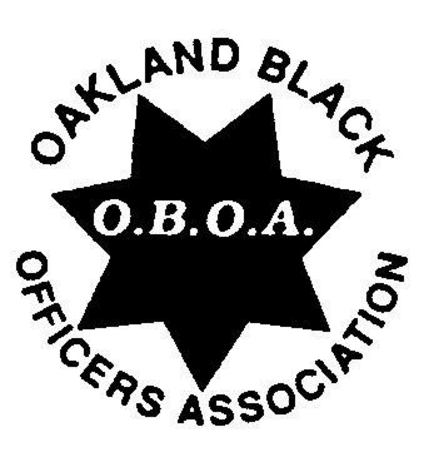City Government
Oakland Black Officers challenge racist culture at OPD

The following is an open letter to Oakland Police Department Chief Anne Kirkpatrick, Mayor Libby Schaaf, and City Administrator Sabrina Landreth.
The Oakland Black Officers Association (OBOA) is very concerned that a culture remains in place at Oakland Police Department (OPD) and in senior leadership that could be perceived as unfair, racist, inequitable and not in line with the Oakland Police Department’s core values.
We believe the citizens of Oakland deserve a police department with strong senior leadership that acts quickly and decisively when faced with tough decisions and challenges around race and equity. We are even more concerned that our current leadership does not effectively meet these challenges.
The Oakland Black Officer’s Association is the Oakland Police Department’s first minority advocacy association and has been in existence for nearly 50 years. OBOA exists to advocate for the fair and equitable treatment of our members and the minority community.
Over the years, the OBOA has been made aware of instances of disparate treatment of our members, at all ranks, as well as from our professional/ civilian staff members. Some of the disparate treatment includes:
-Unfair/biased treatment in personnel decisions
-Unfair and/or biased Internal Affairs Investigations and discipline
-Overlooking qualified Black officers/members for assignments and positions
-Biased/Unfair treatment of Black applicants during, hiring, the Academy, and Field Training Program
The most recent example of a lack of action by OPD leadership occurred in the mishandling of a Recruiting and Backgrounds Commander’s conduct. The Recruiting and Backgrounds Unit works to attract candidates who are qualified, motivated and reflective of the diversity of the City of Oakland.
The unit’s former commander threatened these efforts by engaging in the following conduct:
-Rejecting qualified minority candidates for very minor issues;
-Setting an internal, undocumented standard that favored applicants with a formal education over candidates without one. He also looked less favorably at online universities or trade schools like DeVry, Carrington College or the University of Phoenix— and would refer to these institutions as “fake schools;”
-Candidates who previously used Adderall, Cocaine, Mushrooms, Acid, LSD or drugs typically used by more affluent users were considered for employment while candidates who previously used Cocaine Base/Crack or Heroin were immediately rejected;
-Failing to grant extensions to two Black officers to remain in their positions but granting an extension to a similarly situated White Sergeant.
Despite OBOA’s bringing these serious issues to the attention of Chief Kirkpatrick on Oct. 15, 2018, and Chief Kirkpatrick assurances that these issues would be addressed and the then Recruiting Backgrounds Commander would immediately be removed from his position; nearly 90 days lapsed before any action was taken.
It was only after the OBOA meet with the City Administrator and the Mayor that the former Unit Commander was removed from his position.
The Chief’s inaction and unwillingness to address disparate treatment in the hiring and retention of officers is egregious and hurts our members and the public at large. It undermines the Department’s ability to address one of the Community’s top issues—secure candidates reflective of our community. And, fosters inequity throughout the Department and our subsequent treatment of the community.
We cannot continue with this lack of leadership and ask that our concerns be addressed in a timely and transparent fashion.
This letter was submitted by the Executive Board of the Oakland Black Officers Association.
Activism
IN MEMORIAM: Nate Holden, State Senator and Longtime Los Angeles Councilmember, Dies at 95
Los Angeles County Supervisor Janice Hahn described Holden as “a lion” in the State Senate and a force to be reckoned with on the Los Angeles City Council.” Hahn added that she learned a lot working with Holden when she was a new councilmember.

By Bo Tefu, California Black Media
Former Los Angeles City Councilmember Nathaniel “Nate” Holden, a prominent figure in the city’s politics, passed away at the age of 95, his family confirmed on May 7.
Holden, who represented South Los Angeles for 16 years on the City Council and served one term in the California State Senate, was widely regarded as a forceful advocate for his community.
Los Angeles County Supervisor Janice Hahn described Holden as “a lion” in the State Senate and a force to be reckoned with on the Los Angeles City Council.”
Hahn added that she learned a lot working with Holden when she was a new councilmember.
Holden’s journey to political prominence began in the segregated South, where he was born in Macon, Georgia, in 1929. He often recalled the childhood moment when he first heard the governor of Georgia vowing to continue suppressing Black people.
“Doing the best you can for the people. Law and order. Make sure that people’s communities are safe. I did it all,” said Holden, reflecting on his legacy.
Holden is survived by his sons, including former California Assemblymember Chris Holden, who represented a district in Southern California that includes Pasadena and Altadena in Los Angeles County and cities in San Bernardino County.
Activism
Oakland Hosts Town Hall Addressing Lead Hazards in City Housing
According to the city, there are 22,000 households in need of services for lead issues, most in predominantly low-income or Black and Latino neighborhoods, but only 550 to 600 homes are addressed every year. The city is hoping to use part of the multimillion-dollar settlement to increase the number of households served each year.

By Magaly Muñoz
The City of Oakland’s Housing and Community Development Department hosted a town hall in the Fruitvale to discuss the efforts being undertaken to remove lead primarily found in housing in East and West Oakland.
In 2021, the city was awarded $14 million out of a $24 million legal settlement from a lawsuit against paint distributors for selling lead-based paint that has affected hundreds of families in Oakland and Alameda County. The funding is intended to be used for lead poisoning reduction and prevention services in paint only, not water or other sources as has been found recently in schools across the city.
The settlement can be used for developing or enhancing programs that abate lead-based paint, providing services to individuals, particularly exposed children, educating the public about hazards caused by lead paint, and covering attorney’s fees incurred in pursuing litigation.
According to the city, there are 22,000 households in need of services for lead issues, most in predominantly low-income or Black and Latino neighborhoods, but only 550 to 600 homes are addressed every year. The city is hoping to use part of the multimillion-dollar settlement to increase the number of households served each year.
Most of the homes affected were built prior to 1978, and 12,000 of these homes are considered to be at high risk for lead poisoning.
City councilmember Noel Gallo, who represents a few of the lead-affected Census tracts, said the majority of the poisoned kids and families are coming directly from neighborhoods like the Fruitvale.
“When you look at the [kids being admitted] at the children’s hospital, they’re coming from this community,” Gallo said at the town hall.
In order to eventually rid the highest impacted homes of lead poisoning, the city intends to create programs and activities such as lead-based paint inspections and assessments, full abatement designed to permanently eliminate lead-based paint, or partial abatement for repairs, painting, and specialized cleaning meant for temporary reduction of hazards.
In feedback for what the city could implement in their programming, residents in attendance of the event said they want more accessibility to resources, like blood testing, and information from officials about lead poisoning symptoms, hotlines for assistance, and updates on the reduction of lead in their communities.
Attendees also asked how they’d know where they are on the prioritization list and what would be done to address lead in the water found at several school sites in Oakland last year.
City staff said there will be a follow-up event to gather more community input for programming in August, with finalizations happening in the fall and a pilot launch in early 2026.
Alameda County
Oakland Begins Month-Long Closure on Largest Homeless Encampment
At 8 a.m. sharp, city workers began piling up trash and dismantling makeshift homes along the nearly five-block encampment. City crews blocked off streets from 14th Ave to 17th Ave, between E. 12th and International Blvd, due to the Safe Work Zone Ordinance that was passed by the city council in 2022 to protect workers from harassment during cleanings, according to a city spokesperson.

By Magaly Muñoz
The City of Oakland began a three-week-long breakdown of the largest homeless encampment in the city on E. 12th Street on Monday morning. Residents and advocates said they are devastated about the displacement of dozens of people.
At 8 a.m. sharp, city workers began piling up trash and dismantling makeshift homes along the nearly five-block encampment. City crews blocked off streets from 14th Ave to 17th Ave, between E. 12th and International Blvd, due to the Safe Work Zone Ordinance that was passed by the city council in 2022 to protect workers from harassment during cleanings, according to a city spokesperson.
Jaz Colibri, one of the many advocates at the closure, said the encampment sweeps were “intense and terrifying” to witness. They claimed that several residents, many of them non-English speakers, had not been aware that the sweep was happening that day because of a lack of proper communication and outreach from Oakland.
Colibri added that the city had done a Census “many months ago” and “had not bothered to count people since then”, meaning dozens of individuals have missed out on housing and resources in the last few weeks because the city doesn’t offer outreach in multiple languages.
“Basically, [Oakland] dropped the ball on actually getting to know everybody who lives here and then creating a housing solution that meets everyone’s needs,” Colibri said.
City spokesperson Jean Walsh told the Post that notices of the closure operation were posted in Spanish and Chinese prior to Monday, but did not clarify if outreach was done in those languages as well.
Nearly a dozen Oakland police vehicles, California Highway Patrol officers, and Oakland Public Works staff were gathered along E 12th waiting for residents to pack up their belongings and move away from the area.
Advocates said residents “felt unsafe” due to the hefty law enforcement presence.
One city worker, who was picking up debris near 16th Ave, said, “They’ve known we were coming for a long time now” in reference to resident confusion about the sweeping.
The state doubled down on its requirement to get cities and counties to deal with their homelessness crisis at a press conference Monday afternoon. Gov. Gavin Newsom’s office released a “model ordinance” that is intended to provide a starting point that local municipalities can use to build from and adjust in creating their own policies on encampments, if they haven’t done so yet.
Newsom said “No more excuses, time to deliver” after the state has poured hundreds of millions of dollars into solving the issue.
Oakland was awarded a $7.2 million grant from the state in 2024 to close long-standing encampments in the city, including camps at Martin Luther King, Jr. and 23rd Street, and Mosswood Park.
Residents at these encampments were offered wraparound supportive services, temporary shelter, and eventually will be transitioned to permanent supportive housing, according to a city statement from last year.
Residents who accepted housing at these three encampments were moved into newly acquired property, formerly the Extended Stay America Hotel in West Oakland, which will first serve as interim housing for up to 150 individuals and couples in 105 units, and in the coming year, will be converted into 125 units of permanent housing.
Walsh said as of May 2, “32 residents of the recently closed Mosswood Park encampment moved into the Mandela House program” and as of May 12, “41 residents of the East 12th Street encampment have already accepted offers to move to the Mandela House.” The city will provide final numbers of how many accepted and moved into housing after the closure operation is over.
-

 Activism4 weeks ago
Activism4 weeks agoAI Is Reshaping Black Healthcare: Promise, Peril, and the Push for Improved Results in California
-

 Activism4 weeks ago
Activism4 weeks agoBarbara Lee Accepts Victory With “Responsibility, Humility and Love”
-

 Activism4 weeks ago
Activism4 weeks agoESSAY: Technology and Medicine, a Primary Care Point of View
-

 Activism4 weeks ago
Activism4 weeks agoNewsom Fights Back as AmeriCorps Shutdown Threatens Vital Services in Black Communities
-

 Activism4 weeks ago
Activism4 weeks agoFaces Around the Bay: Author Karen Lewis Took the ‘Detour to Straight Street’
-

 Arts and Culture4 weeks ago
Arts and Culture4 weeks agoBOOK REVIEW: Love, Rita: An American Story of Sisterhood, Joy, Loss, and Legacy
-

 #NNPA BlackPress4 weeks ago
#NNPA BlackPress4 weeks agoThe RESISTANCE – FREEDOM NOW
-

 Alameda County4 weeks ago
Alameda County4 weeks agoOUSD Supt. Chief Kyla Johnson-Trammell to Step Down on July 1


















































